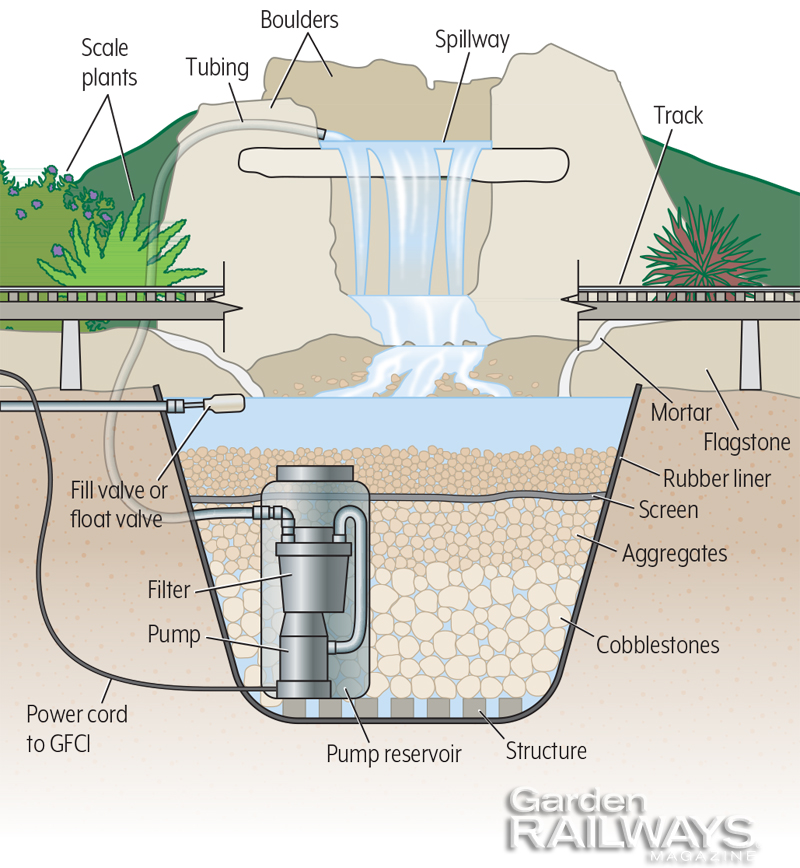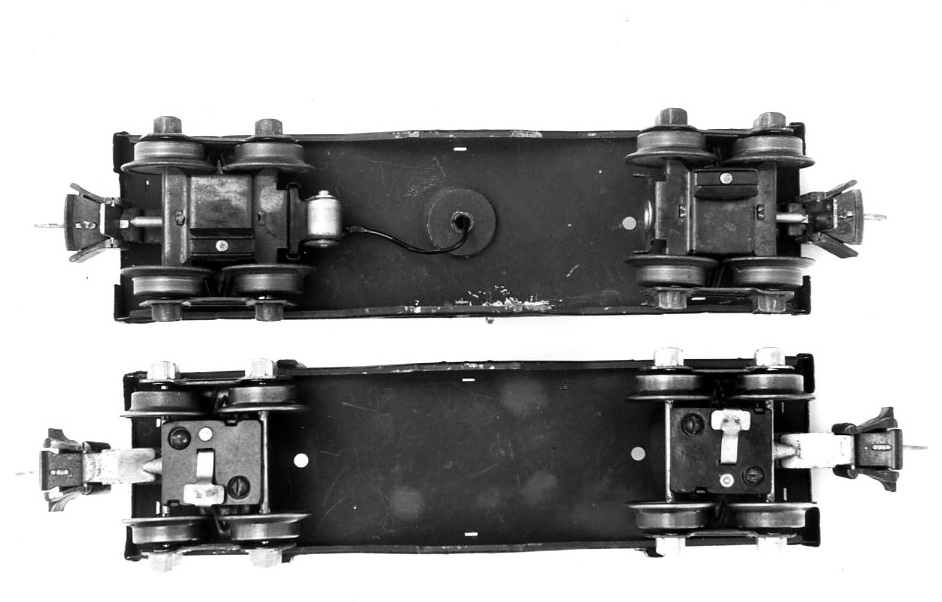Waterscape your garden railway: Swirling water stirs the imagination. Splashing shuts out city sounds, and viewers remember seeing famous falls at national parks or smaller watercourses near home. Bridges over brooks urge us to see connections to the land and how plantings create the habitat for a popular scenic attraction.
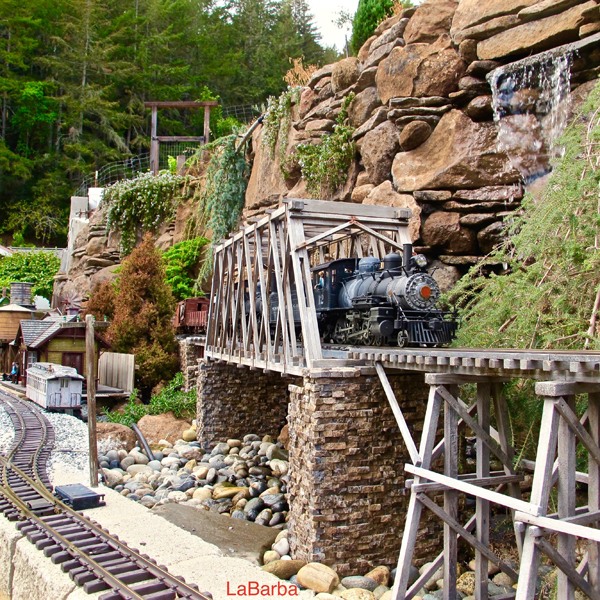
There are countless reasons why builders want to include a water feature (or two) into a railway. But before you jump into the deep end of the pool, let me inspire you with reasons why other hobbyists chose their styles. Then I’ll give you nitty gritty details of typical water feature construction.
Location matters
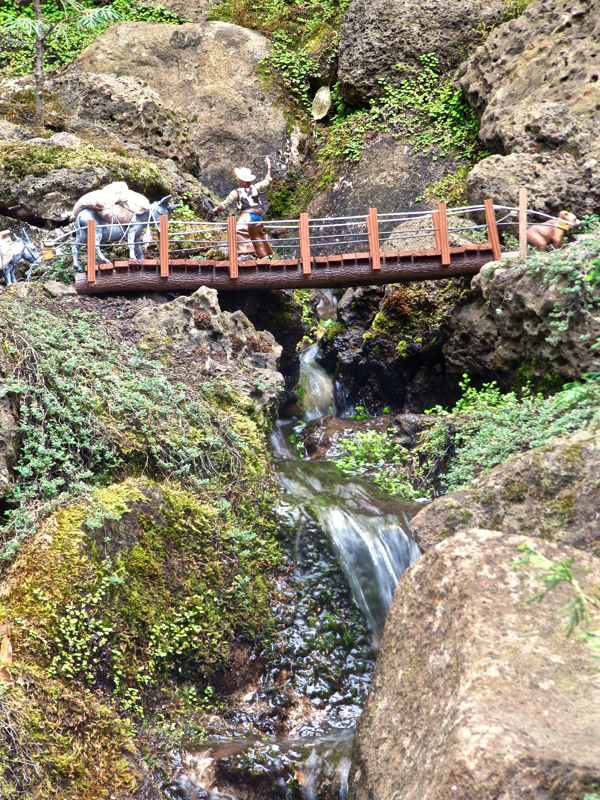
A stable rock “mountain” forms an obvious location for water flow, especially if full-size trees won’t overhang to drop extra work. Dart and Dottye Rinefort hid a feed pipe behind the perceived action on a bridge on their OS&FRR (photo 1). Wet rocks grow native moss and baby tears (Soleirolia soleirolii, Zones 9-11) in partial shade.
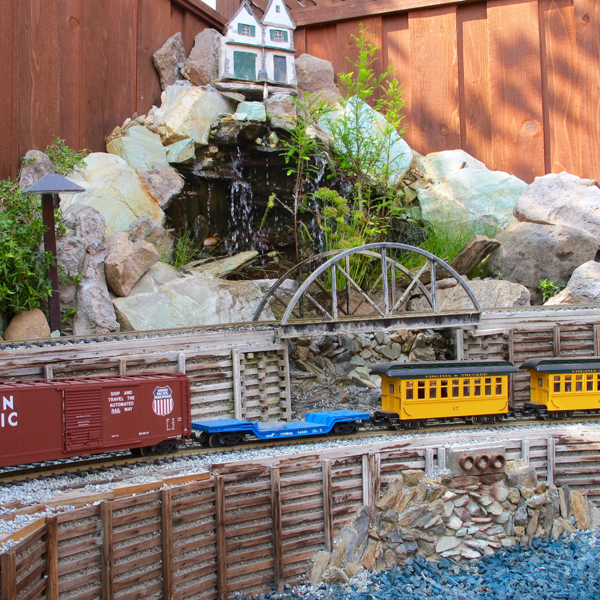
Preserved boards create a framework built over a 55-gallon stock tank to model the Himalayas (photo 2). Harsh Misra chose colorful turquoise-veneer rocks to remind him of his homeland in India. English ivy vines (Hedera helix ‘Needlepoint’, Zones 5-10) creep across the dry mortared rocks, while bald cypress (Taxodium distichum, Zones 4-10) and dwarf papyrus (Cyperus papyrus ‘King Tut’ or C.p. ‘Nana’, Zones 9-11) pull droplets back into the pond.
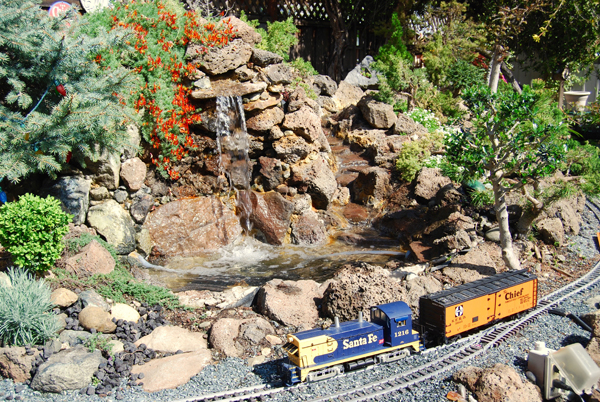
Instead of a gentle stream, Jerry and Shirley Bradley (photo 3) longed for a splashy waterfall that they can see and hear from their house on the Indigo Mountain Railroad. A 20″-high retaining wall leaves room for the pond’s reservoir to sink below grade. The pump plugs into the box lower right with 110V wires properly routed in PVC conduit. A colorful parrot’s beak vine (Lotus berthelotii, Zones 9-11) mitigates the pile of rocks needed to gain elevation.
Anatomy of a water feature
Design harmony
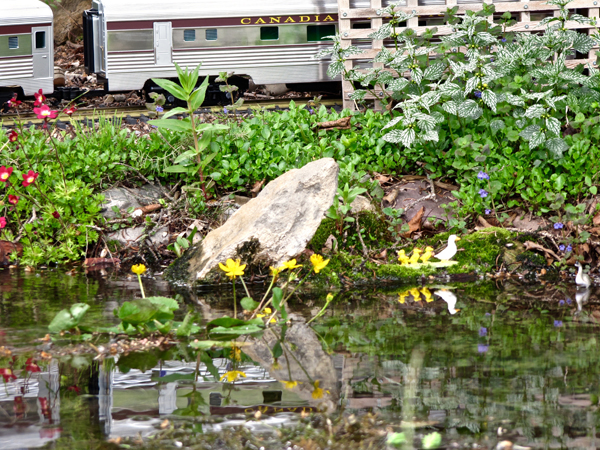
The design goal of a focal point is displayed at the Miens Family Railroad’s pond in the Canadian Rockies (photo 4). Canadian Pacific coaches shimmer in the woodsy wash, where yellow marsh marigolds (Caltha palustris, Zones 2-9) point to yellow ducklings. Preventing erosion on the shore, red saxifrage (Saxifraga arendsii var., Zones 3-8) and creeping blue speedwell (Veronica repens, Zones 2-9) contrast the silvery deadnettle, (Lamium galeobdolon ‘Herman’s Pride’, Zones 2-9) against the lattice.
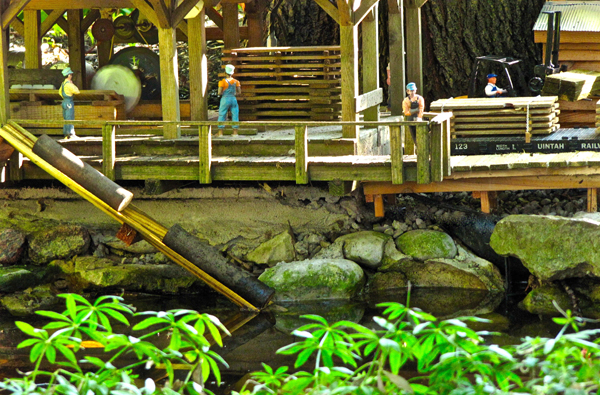
In photo 5, water is needed to employ the theme, “Let’s get to work.” As the sawmill lines up logs on the ramp for sawing, a row of sweet woodruff (Galium odoratum, Zones 4-9) frames and blends the scene into Rick and Eileen Norwood’s’ yard and acts as a psychological barrier to foot traffic.
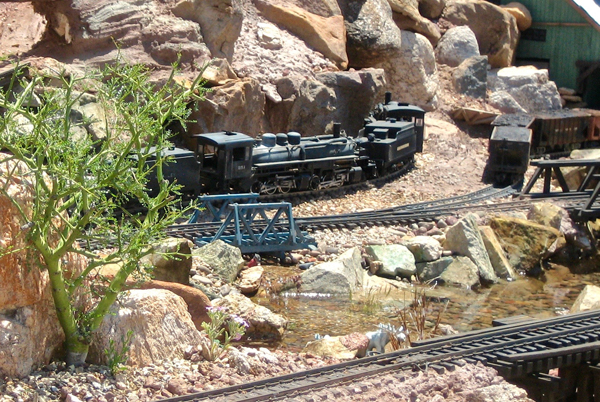
Respite from the Arizona heat, an oasis in photo 6 refreshingly complements the Eagle Mountain Railroad. Gary and Peggy Martin contrast their red-rock mountains with local turquoise stone holding back an apparently seasonal stream where a few flowers linger on the shore. Their palo verde trees, an icon of the southwest desert, can be found in a little-leaf version (Cercidium microphyllum, Zones 8-10).
Think small
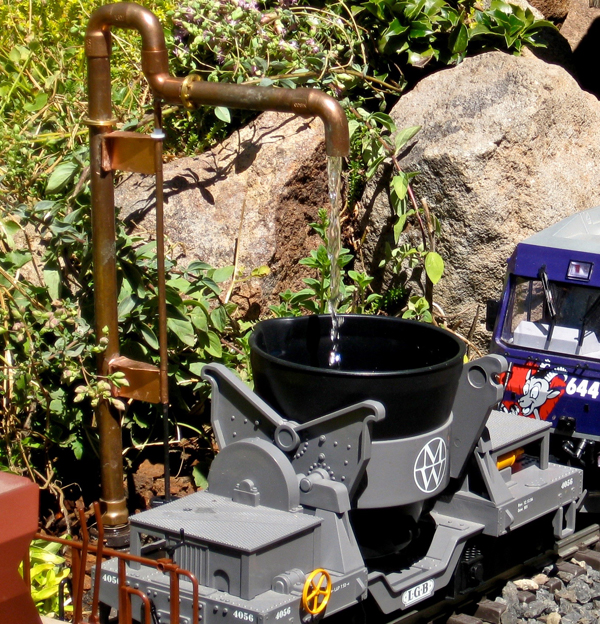
The great thing about modeling scale water is that it’s even more believable when small. With the exception of the Regional Reports, the examples here are small to moderate in size. Why not sink a birdbath-like pot in your park, farm, or circus and use one of those solar-powered fountains advertised online? See accessories at https://twogreenthumbs.com/collections/miniature-garden-water-features
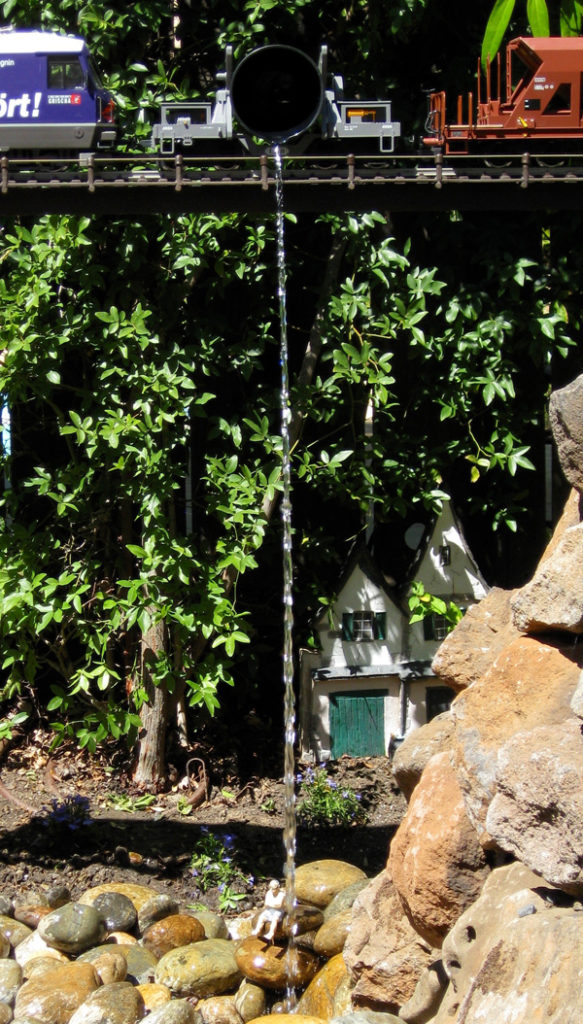
Chip Gierhart didn’t just build a water feature on his Rhadishe Bahn West, he turned it into an attraction (photos 7 and 8). A brass faucet fills LGB’s molten ore car, which travels to the rear of the railway and auto-dumps onto an unsuspecting sunbather! He tucked dry ice into the ravine for sea smoke. See his “molten” liquid test video.
Resources
Make stronger scale retaining walls, Aug. 2012
Building wet or dry streams, Feb. 2010
How to build a pondless waterfall, Dec. 2009
Aquatics have wet feet, Extensive plant list, all zones, Aug. 2008





